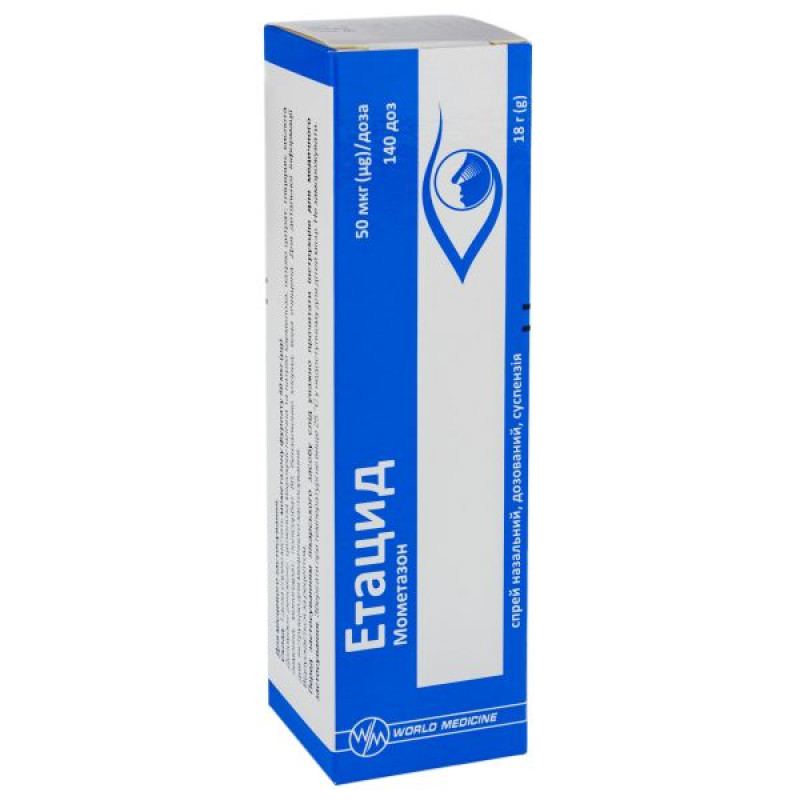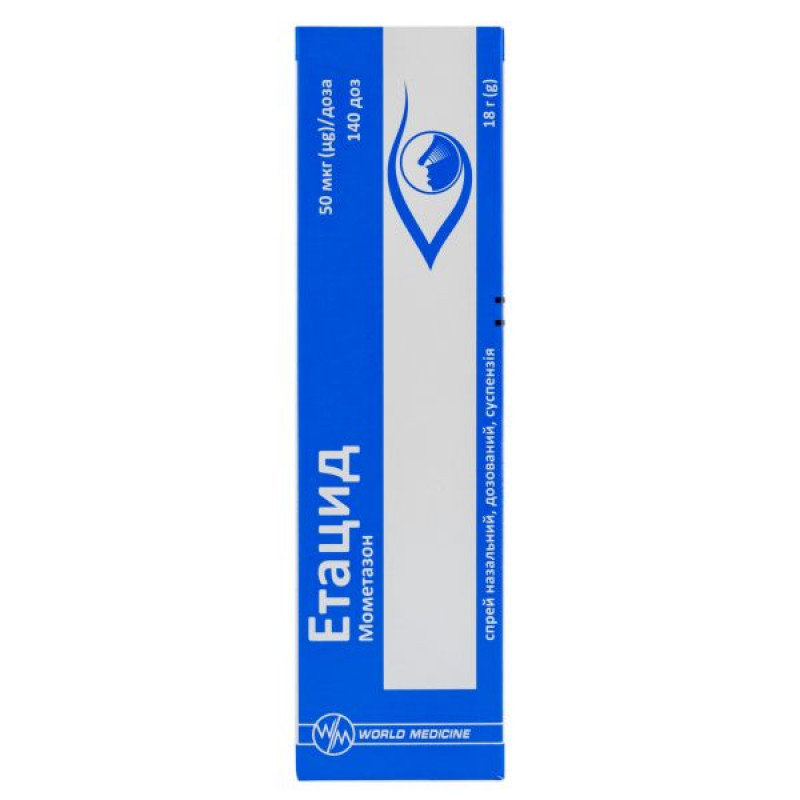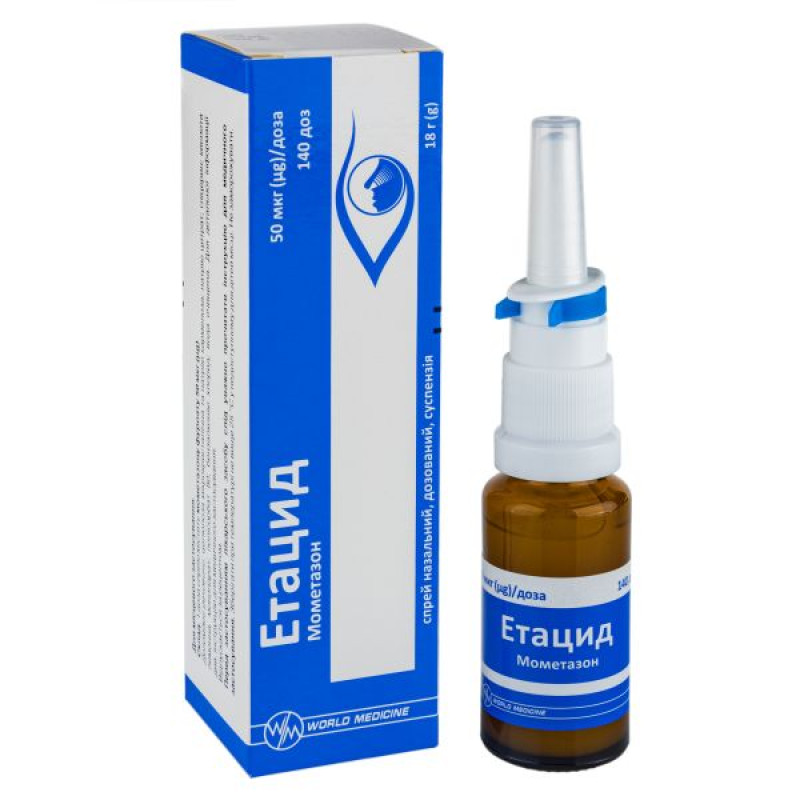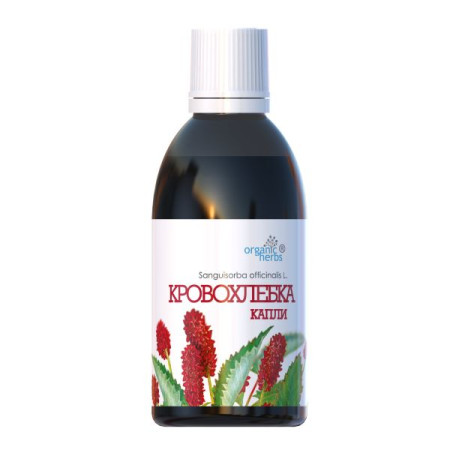Etacid nasal spray dosed suspension 50 mcg/dose bottle 18 g 140 doses

Instructions Etacid nasal spray dosed suspension 50 mcg/dose bottle 18 g 140 doses
Composition
active ingredient: mometasone;
1 dose of spray contains mometasone furoate 50 mcg;
Excipients: microcrystalline cellulose and carmellose sodium; sodium citrate; glycerin; citric acid, monohydrate; polysorbate 80; benzalkonium chloride; purified water.
Dosage form
Nasal spray, metered dose, suspension.
Main physicochemical properties: white or almost white suspension.
Pharmacotherapeutic group
Anti-edematous and other drugs for topical use in diseases of the nasal cavity. Corticosteroids. ATX code R01A D09.
Pharmacological properties
Pharmacodynamics
Mometasone furoate is a synthetic corticosteroid for topical use that has a pronounced anti-inflammatory effect. The local anti-inflammatory effect of mometasone furoate is manifested in doses at which systemic effects do not occur.
The mechanism of anti-inflammatory and antiallergic action of mometasone furoate is mainly related to its ability to inhibit the release of mediators of allergic reactions. Mometasone furoate significantly reduces the synthesis/release of leukotrienes from leukocytes of patients suffering from allergic diseases. Mometasone furoate has demonstrated 10-fold greater activity in cell culture than other steroids, including beclomethasone dipropionate, betamethasone, hydrocortisone and dexamethasone, in inhibiting the synthesis/release of IL-1, IL-5, IL-6 and TNFα. It is also a potent inhibitor of the production of Th2 cytokines, IL-4 and IL-5 from human CD4+ T cells. Mometasone furoate is also 6-fold more active than beclomethasone dipropionate and betamethasone in inhibiting the production of IL-5.
Pharmacokinetics
The bioavailability of mometasone furoate when administered as a nasal spray is < 1% in plasma. Mometasone furoate suspension is very poorly absorbed from the gastrointestinal tract, and the small amount that can be absorbed undergoes extensive first-pass metabolism before being excreted primarily as metabolites in the bile and, to some extent, in the urine.
Indication
- Treatment of seasonal or perennial allergic rhinitis in adults and children aged 2 years and over. Prophylactic treatment of moderate to severe allergic rhinitis is recommended to begin 4 weeks before the expected start of the pollen season;
- as an adjunctive therapy in the antibiotic treatment of acute episodes of sinusitis in adults (including the elderly) and children aged 12 years and older;
- treatment of symptoms of acute rhinosinusitis without signs of severe bacterial infection in adults and children aged 12 years and older;
- treatment of nasal polyps and associated symptoms, including nasal congestion and loss of smell, in patients aged 18 years and older.
Contraindication
Hypersensitivity to the active substance or to any inactive component of the drug.
The drug should not be used in the presence of untreated localized infection involving the nasal mucosa.
Because corticosteroids have the effect of inhibiting wound healing, patients who have recently had nasal surgery or trauma should not use a nasal corticosteroid until the wound has fully healed.
Interaction with other medicinal products and other types of interactions
When used simultaneously with loratadine, no effect on the plasma concentration of loratadine or its main metabolite was observed, and mometasone furoate was not detected in the blood plasma even at minimal concentrations. The combined therapy was well tolerated by patients.
Data on interactions with other drugs have not been conducted.
Application features
The use of the drug in young children must be carried out with the help of adults.
The drug should not be used in the presence of untreated local infection involving the nasal mucosa.
Etacid should be used with caution or not at all in patients with active or latent tuberculosis infection of the respiratory tract, as well as in untreated fungal, bacterial, systemic viral infections, or herpes simplex infection with eye involvement.
After treatment with the drug for a year, there were no signs of atrophy of the nasal mucosa; in addition, mometasone furoate contributed to the normalization of the histological picture of the nasal mucosa. As with any long-term treatment, patients using the drug for several months or more should be periodically examined to detect possible changes in the nasal mucosa. In the event of the development of a local fungal infection of the nose or pharynx, it may be necessary to discontinue therapy with the drug or conduct appropriate treatment. Irritation of the nasal mucosa and pharynx that persists for a long time may also be an indication for discontinuation of the drug.
No evidence of hypothalamic-pituitary-adrenal axis suppression has been observed with long-term treatment with mometasone furoate. Patients transferred to nasal spray after long-term systemic corticosteroid therapy should be carefully monitored. Discontinuation of systemic corticosteroids in such patients may result in adrenal insufficiency, which may require resumption of systemic corticosteroid therapy and the use of other appropriate treatment.
When switching from systemic corticosteroid treatment to Etacid, symptoms of corticosteroid withdrawal (e.g. joint and/or muscle pain, fatigue and depression) may occur alongside relief of nasal symptoms. Such patients should be specifically advised to continue treatment with the spray. Changing therapy may also reveal allergic diseases (such as allergic conjunctivitis, eczema, etc.) that have developed previously and were masked by systemic corticosteroid therapy.
Patients taking corticosteroids may potentially have reduced immune reactivity and should be warned about the increased risk of infection when in contact with patients with certain infectious diseases (e.g., chickenpox, measles), as well as the need to consult a doctor if such contact occurs.
The potential risk of Cushing's syndrome may occur with prolonged use of the drug at high doses.
Cases of nasal septal perforation or increased intraocular pressure have been reported very rarely following the use of intranasal corticosteroids.
Patients should be advised to seek immediate medical attention if they develop symptoms of a serious bacterial infection, such as fever, severe unilateral facial or dental pain, orbital or periorbital swelling/edema, or worsening of symptoms after initial improvement.
Use during pregnancy or breastfeeding
No special studies of the drug's effects have been conducted in pregnant women.
As with other intranasal corticosteroids, mometasone furoate should be used in pregnant and lactating women only if the potential benefit justifies the potential risk to the woman, fetus, or infant. Infants whose mothers have used corticosteroids during pregnancy should be carefully observed for possible adrenal hypofunction.
Ability to influence reaction speed when driving vehicles or other mechanisms
Unknown.
Method of administration and doses
Before using a new bottle of the drug, it should be calibrated. Calibration is carried out by approximately 10 presses of the dosing device, while establishing a stereotypical delivery of the drug substance, in which each press releases approximately 100 mg of suspension (one dose); 1 dose of spray contains 50 mcg of mometasone furoate. If the nasal spray is not used for 14 days or longer, before the next use, it is necessary to spray again by 2 presses until full delivery is observed. Do not pierce the nozzle before starting use.
Shake the bottle vigorously before each use.
If the nozzle is clogged, you need to remove the plastic cap by gently pressing the white ring, easily remove the nozzle and rinse it with warm running water, dry it and install it in its previous place. Do not try to clean the nozzle with a needle or other sharp object, as such actions will damage the dispenser. Regular cleaning of the nozzle is very important.
Before each use, the nose should be thoroughly cleaned of mucus.
Treatment of seasonal or perennial allergic rhinitis
For adults (including the elderly) and children over 12 years of age, the recommended prophylactic and therapeutic dose of the drug is 2 injections (50 mcg each) into each nostril once a day (total daily dose – 200 mcg). After achieving a therapeutic effect, for maintenance therapy, it is advisable to reduce the dose to 1 injection into each nostril once a day (total daily dose – 100 mcg).
If the symptoms of the disease cannot be alleviated by using the drug in the recommended therapeutic dose, the daily dose can be increased to the maximum: 4 sprays into each nostril once a day (total daily dose - 400 mcg). After the symptoms of the disease have subsided, it is recommended to reduce the dose.
The drug has demonstrated a clinically significant onset of action within 12 hours of the first application in some patients with seasonal allergic rhinitis. However, the full benefit of treatment cannot be obtained within the first 48 hours, so the patient needs to continue regular use to achieve the full therapeutic effect.
For children aged 2-11 years, the recommended therapeutic dose is 1 spray (50 mcg) in each nostril once a day (total daily dose - 100 mcg).
Adjunctive treatment of acute episodes of sinusitis
If relief of symptoms is not achieved by using the drug in the recommended therapeutic dose, the daily dose can be increased to 4 sprays in each nostril 2 times a day (total daily dose - 800 mcg). After relief of symptoms, it is recommended to reduce the dose.
Acute rhinosinusitis
For adults and children aged 12 years and over, the recommended therapeutic dose is 2 sprays (50 mcg) in each nostril 2 times a day (total daily dose – 400 mcg).
Nasal polyps
For patients aged 18 years and over (including the elderly), the recommended dose is 2 sprays (50 mcg) in each nostril 2 times a day (total daily dose – 400 mcg). After achieving a clinical effect, it is recommended to reduce the dose to 2 sprays in each nostril 1 time a day (total daily dose – 200 mcg).
Children
When administered to children at a daily dose of 100 mcg for a year, no growth retardation was observed.
The safety and efficacy of the drug in the treatment of nasal polyps in children and adolescents (under 18 years of age), symptoms of rhinosinusitis in children under 12 years of age, and seasonal or perennial allergic rhinitis in children under 2 years of age have not been studied.
Overdose
Due to the fact that the systemic bioavailability of the drug is <1% (according to the results of a sensitive method, the lower limit of quantification is 0.25 pg/ml), it is unlikely that in case of overdose, other measures will be required, except for monitoring the patient's condition with subsequent use of the drug at the recommended dose.
Inhalation or oral administration of excessive doses of corticosteroids may lead to suppression of the function of the hypothalamic-pituitary-adrenal axis.
Adverse reactions
In seasonal and perennial allergic rhinitis, the following adverse events were observed: headache (8%), epistaxis (i.e., overt bleeding, bloody mucus, or blood clots) (8%), pharyngitis (4%), nasal burning sensation (2%), irritation (2%), and ulceration (1%) of the nasal mucosa. The development of such adverse events is typical with any nasal spray containing corticosteroids.
The frequency of adverse events in children: nosebleeds (6%), headache (3%), nasal irritation (2%), and sneezing (2%).
Immediate allergic reactions (e.g. bronchospasm, dyspnoea) may occasionally occur after intranasal administration of mometasone furoate. Anaphylactic reactions and angioedema have been reported very rarely.
Isolated cases of taste and smell disorders have been reported.
When mometasone furoate was used as an adjunct in the treatment of acute sinusitis, the following adverse events were observed: headache (2%), pharyngitis (1%), nasal burning sensation (1%), and nasal mucosal irritation (1%). Epistaxis was moderate (5%).
Upper respiratory tract infection was reported in 1% of patients.
Very rarely, cases of nasal septal perforation or increased intraocular pressure have been reported with intranasal use of corticosteroids.
Rare cases of glaucoma and/or cataracts have been reported with the use of intranasal corticosteroids.
Expiration date
3 years.
Storage conditions
Store at a temperature not exceeding 25 ° C, out of the reach of children. Do not freeze.
Packaging
18 g (140 doses) in a bottle with a dosing device and a protective cap; 1 bottle in a cardboard box.
Vacation category
According to the recipe.
Producer
WORLD MEDICINE ILACH SAN. VE TIJ. A. Sh. / WORLD MEDICINE ILAC SAN. VE TIC. AS
Applicant
WORLD MEDICINE OPHTHALMICS ILACLARI LTD. STI., Turkey.
Location of the manufacturer and address of its place of business
Evren Mach. Jami Yolu Jad. No. 50, 34212 Guneshli Bagjilar, Istanbul, Turkey / Evren Mah. Cami Yolu Cad. No.50, 34212 Gunesli-Bagcilar, Istanbul, Turkey.
There are no reviews for this product.
There are no reviews for this product, be the first to leave your review.
No questions about this product, be the first and ask your question.


















